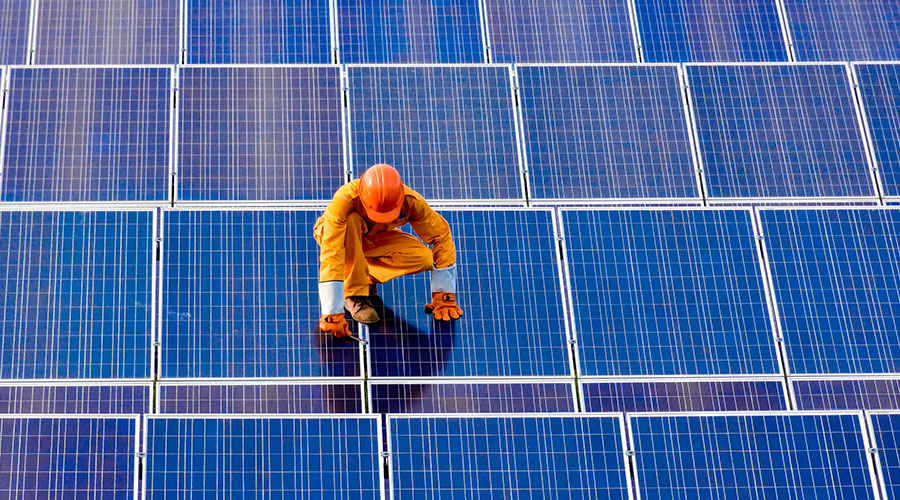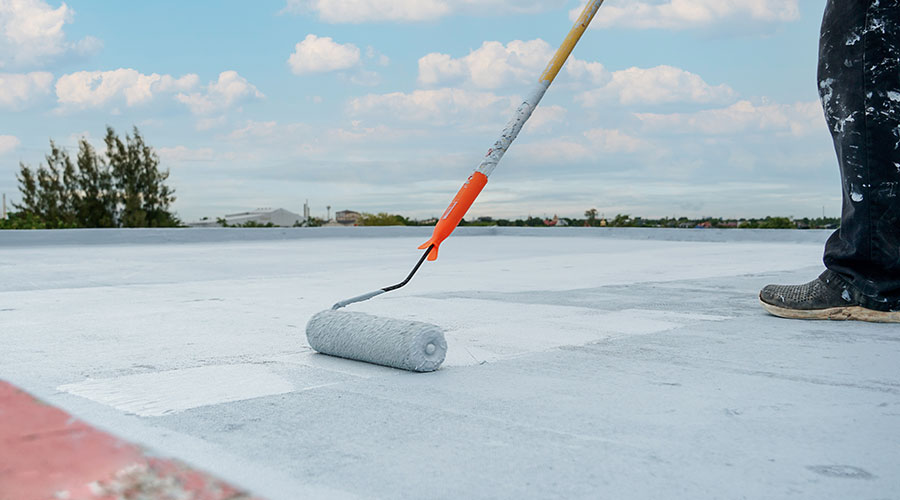Roof Coatings: Bottom-Line Benefits
A better understanding of the benefits and types of roof coatings can help managers specify for savings
— In conjunction with Roof Coatings Manufacturers Association
Despite the fact that maintaining a roof can account for as much as 90 percent of the total building-maintenance cost, most building owners have a tendency to overlook this critical building component and the importance of a regular roof maintenance program until it is too late. By this time, the roof system either has developed leaks, or it requires extensive repair or replacement.
Because the roof is essentially out of sight and out of mind, maintenance and engineering managers generally do not consider the variety of chemical and physical stresses that roofing systems are exposed to regularly. Airborne particulates, chemicals and debris collect on the roof, clogging drains and damaging the roof and its components.
Ultraviolet (UV) and thermal radiation from the sun repeatedly bombard the surface, accelerating oxidation and chemically degrading the roof system, causing it to become brittle. And if these challenges weren’t enough, water in the form of rain, snow, sleet and hail further compounds the destruction through erosion, expansion and contraction forces, and mechanical impact.
But with a properly planned and executed maintenance program — including the use of roof coatings — maintenance and engineering managers can prolong a roof's life and substantially reduce the chance of serious leaks. The cost of proper maintenance generally is much less than the damage and repair costs that can be avoided, and it is less than the intangible but truly disruptive costs of a re-roofing project. Consequently, routine maintenance can reduce the total life-cycle costs for the organization.
The Roles of Coatings
A number of proven coatings exist for most low-slope roof systems — built up, single ply, modified bitumen, metal and SPF — and for a number of steep-slope systems — metal, ceramic tile and SPF). Some coatings are an integral part of the original or re-roof system, while others are designed to maintain particular systems, either as a part of the manufacturer’s system warranty program or as part of the owner’s maintenance program.
Maintenance and engineering managers must be aware of the variety of roof system types, as well as their specific requirements that are associated with each system. Managers also must be knowledgeable about the type of coatings that are available and the benefits that they can provide to institutional and commercial facilities.
Many coatings are intended for use on specific roof types, and sometimes their application is limited to specific climates. Generally speaking, when it comes to coatings one size does not fit all.
Types of Coatings
Essentially, roof coatings can be grouped into three categories: functional coatings, reflective coatings and maintenance systems.
Functional coatings are generally low-technology materials that are chemically compatible with the primary roof membrane. They protect the roof membrane by preventing direct exposure to solar radiation, atmospheric elements and water. They also can seal minor imperfections in the membrane. Classical examples include fibered solvent-based asphalt and coal-tar coatings and bituminous emulsions.
Most in-house maintenance personnel can apply functional coatings to low-slope roofs, but managers should work with professional roofers when coating steep-slope roofs. Using in-house personnel can help managers to reduce the cost of the maintenance and allow it to be performed incrementally as weather and scheduling permits.
If the underlying membrane is in good condition, a maintenance program that includes periodic application of this sacrificial type of coating can cost effectively extend the life of a conventional roof by one-three years or more.
Reflective coatings protect and extend the life of the roof system by reflecting a substantial portion of the solar radiation that reaches the roof surface. By shedding this energy before it is absorbed as heat, the reflective coating can substantially reduce both the peak temperature and the daily temperature cycle seen by the roof membrane. Depending on a number of factors, including the geographical climate and building design, reflective coatings also can result in reduced building energy costs.
Most reflective coatings use either aluminum metal or white titanium dioxide pigments to reflect or scatter sunlight. They tend to be moderate- to high-tech materials, with prices to match, and come in a variety of technologies and grades. Reflective coatings — especially water-based coatings — tend to be more sensitive to the exact type of roof membrane to which they are applied, to the cleanliness and preparation of the roof surface, and to weather conditions while the coating cures.
Even modest reductions in the peak temperature and the temperature cycle of the roof will significantly extend the life of the roof. This benefit is particularly true for well-insulated roof systems, which tend to run hotter because they cannot shed heat into the building. Well-insulated black roofs generally have a shorter life than the identical system that is placed over a roof with less insulation.
As with the functional coatings, most reflective coatings can be applied by in-house maintenance personnel with the same advantages in cost and schedule flexibility. But the manager must select the coating to be compatible with the roof, and the maintenance personnel must follow the manufacturer’s preparation and application instructions exactly. Following these guidelines, managers can expect a performance life of three-seven years, depending on factors that include climate and slope.
Maintenance systems are professionally applied combinations of coatings and reinforcing fabrics; they essentially create a secondary waterproofing membrane attached to the first.
This approach is not the same as trying to install a second roof on top of the first. These systems generally include a reflective surface coating, so they offer comparable benefits to those described above. They can significantly increase the life of an existing roof that starts in at least fair condition. It is common to receive five-to-ten-year renewable warranties on maintenance systems from reputable manufacturers.
Coatings – even maintenance systems – can not fix a failed roof. But by instituting a proactive, routine maintenance program that includes the judicious use of appropriate coatings, managers can extend the useful life of a new or existing roof membrane at a much lower total life-cycle cost when compared to the typical approach of neglect, repair and re-roof.
Information for this article was provided by the Roof Coatings Manufacturers Association.
Related Topics:











